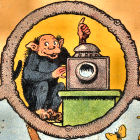 |
The monkey displaying the magic lantern A
Jean-Pierre
Claris de Florian fable |
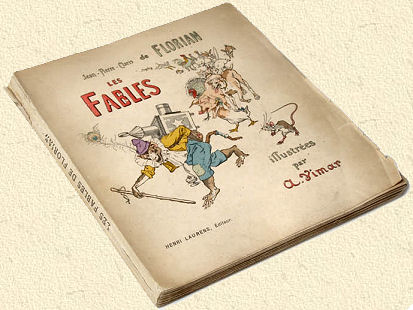 |
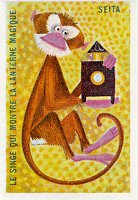
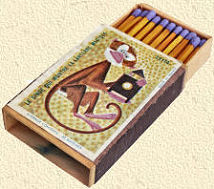 One of a large set of possibly fifty French matchbox labels, each label giving the title and an illustration for a fable of either Jean de La Fontaine or Florian. The trade mark of the matches is SEITA (about 1955). |
|
Le
singe qui montre la lanterne magique
Messieurs les beaux esprits dont la prose et les vers Sont d'un style pompeux et toujours admirable, Mais que l'on n'entend point, écoutez cette fable, Et tâchez de devenir clairs. Un homme qui montrait la lanterne magique Avait un singe dont les tours Attiraient chez lui grand concours: Jacqueau, c'était son nom, sur la corde élastique Dansait et voltigeait au mieux, Puis faisait le saut périlleux, Et puis sur un cordon, sans que rien le soutienne, Le corps droit, fixe, d'à-plomb, Notre Jacqueau fait tout du long L'exercice à la prussienne. Un jour qu'au cabaret son maître était resté (C'était, je pense, un jour de fête), Notre singe en liberté Veut faire un coup de sa tête. Il s'en va rassembler les divers animaux Qu'il peut rencontrer dans la ville ; Chiens, chats, poulets, dindons, pourceaux, Arrivent bientôt à la file Entrez, entrez, messieurs, criait notre Jacqueau; C'est ici, c'est ici qu'un spectacle nouveau Vous charmera gratis : oui, messieurs, à la porte On ne prend point d'argent, je fais tout pour l'honneur. À ces mots, chaque spectateur Va se placer, et l'on apporte La lanterne magique ; on ferme les volets, Et, par un discours fait exprès, Jacqueau prépare l'auditoire. Ce morceau vraiment oratoire Fit bâiller, mais on applaudit. Content de son succès, notre singe saisit Un verre peint qu'il met dans sa lanterne. Il sait comment on le gouverne, Et crie en le poussant : est-il rien de pareil? Messieurs, vous voyez le soleil, Ses rayons et toute sa gloire. Voici présentement la lune ; et puis l'histoire D'Adam, d'Ève et des animaux... Voyez, messieurs, comme ils sont beaux! Voyez la naissance du monde ; Voyez... les spectateurs, dans une nuit profonde, Écarquillaient leurs yeux et ne pouvaient rien voir; L'appartement, le mur, tout était noir. Ma foi, disait un chat, de toutes les merveilles Dont il étourdit nos oreilles, Le fait est que je ne vois rien. Ni moi non plus, disait un chien. Moi, disait un dindon, je vois bien quelque chose; Mais je ne sais pour quelle cause Je ne distingue pas très bien. Pendant tous ces discours, le Cicéron moderne Parlait éloquemment et ne se lassait point. Il n'avait oublié qu'un point, C'était d'éclairer sa lanterne. |
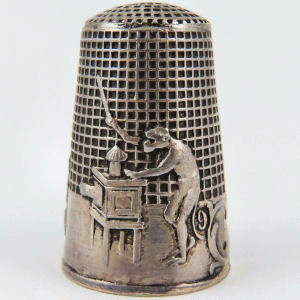
Rare French silver
thimble circa 1850 depicting 'Le Singe'.' |
| Two
French trade cards depicting scenes from Florian's fable.
|
|
|
" Plaisir d'amour ne dure qu'un moment très
court |
Gentlemen writers,
when your prose and poems
|
|
Jean-Pierre Claris de Florian
was born in Sauve, the 6th of March 1755. He lived there in the Rue du vieux Pont. |
|
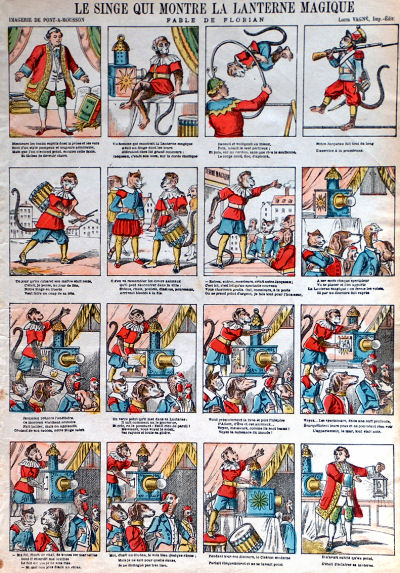 Penny print of Florian's fable, published in Pont-à-Mousson. France, late 19th C. Image size: 41 x 28 cm. |
|
|
Two illustrations from LES MEILLEURES FABLES DE FLORIAN. Edited by la Technique du Livre, ca. 1930. Illustrated by R. Perrette. Book size : 27 x 18.5 cm. |
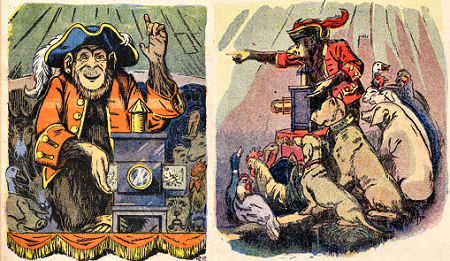 |
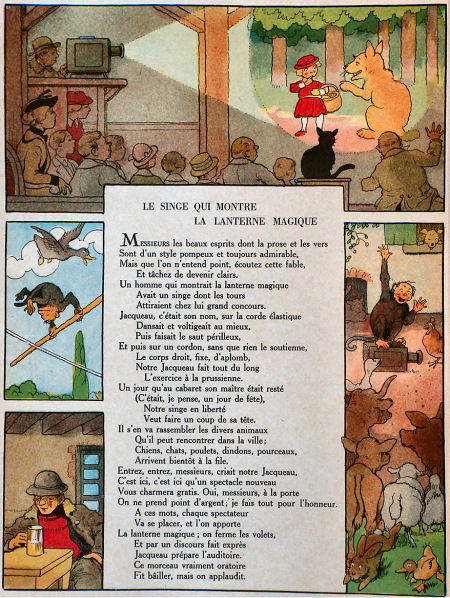 |
(<<Left) Page from the book "Fables de Florian" illustrated by Benjamin Rabier. Published by Garnier, Paris, 1936. |
|
Another French trade card depicting our friend 'le singe'.
|
|
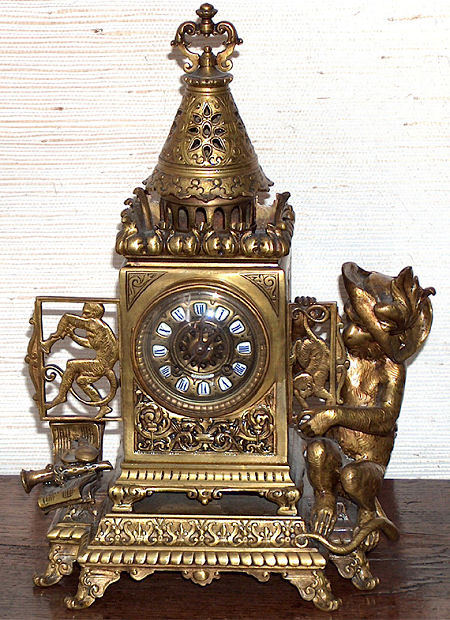 |
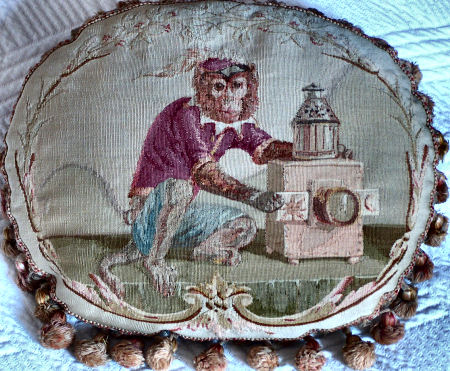 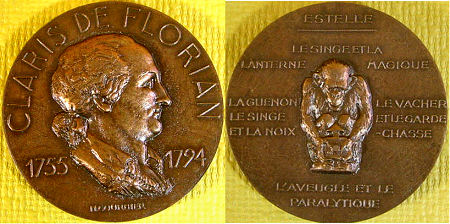 |
|
Mantel clock made of gilded bronze made in Brussell by H. Luppens and
Co., ca. 1890. Heigth: 37 cm. |
Pillow made with an Aubusson tapestry and
a bronze medal with Florian on one side and the monkey with its lantern
on the reverse. Designed by M. Courbier. France,
ca. 1920-1930. Diameter: 6.8 cm. |
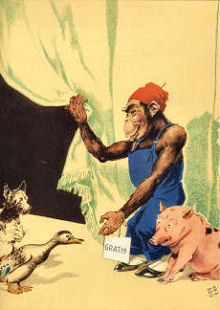
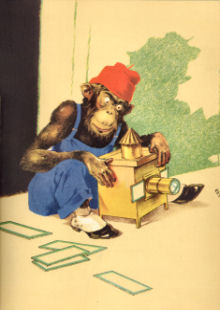 Colour prints of the monkey and the magic lantern in a vintage book of 1949. 12.4" X 9.1". Below: First Day Cover. 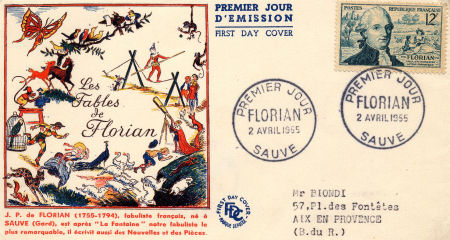 |
|
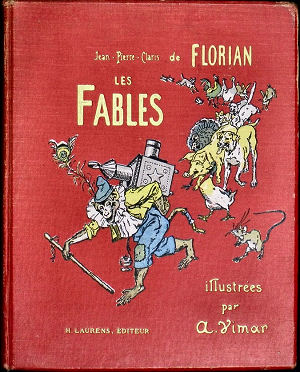 |
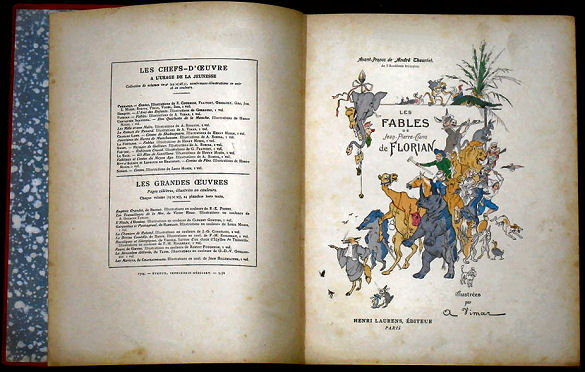 |
|
|
|
||
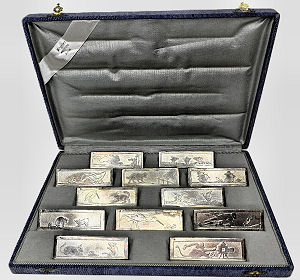 |
 A very pretty box of 12 silver-plated Art Deco knife rests. |
|
|
The stylized animals are inspired by famous French
fables. One of them draws a little more attention because it features the monkey performing a magic lantern projection, according to Florian. |
||
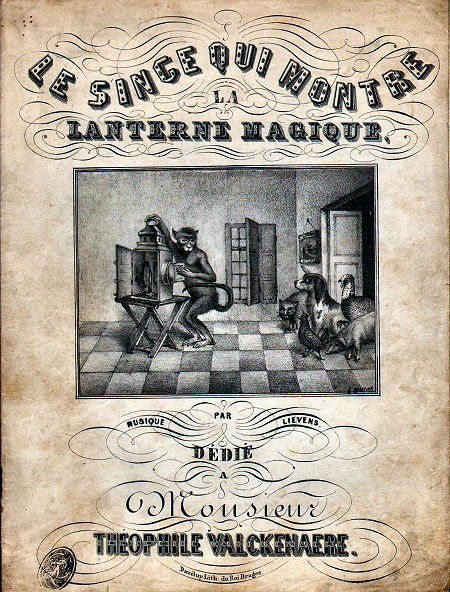 |
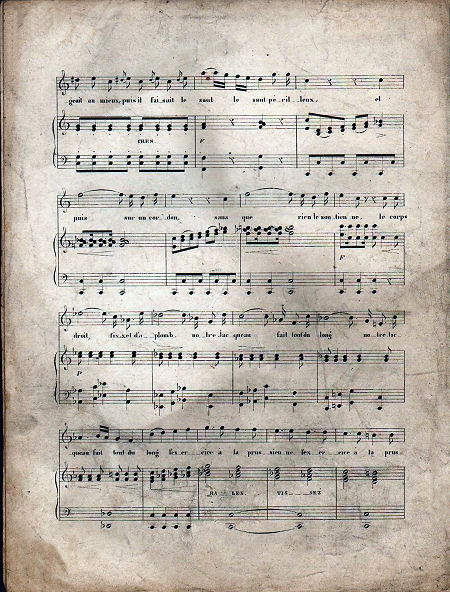 |
| Sheet music, belonging to 'Le Singe qui montre la Lanterne Magique'. Music by Lievens, dedicated to Mr. Theophile Valkenaere. Published by Daveluy Lith du Roi Brughes, Belgium. | |
|
|
|
| |
©1997-2025 'de Luikerwaal' All rights reserved. Last update: 05-04-2025. |

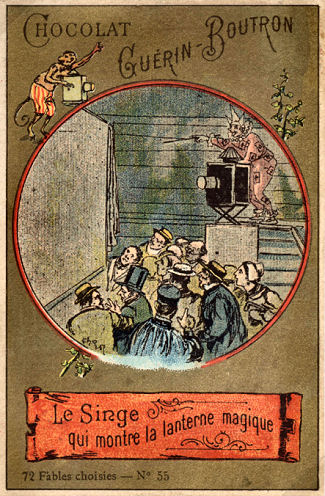
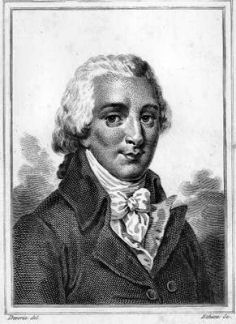

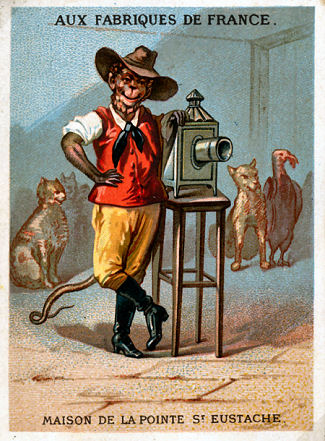
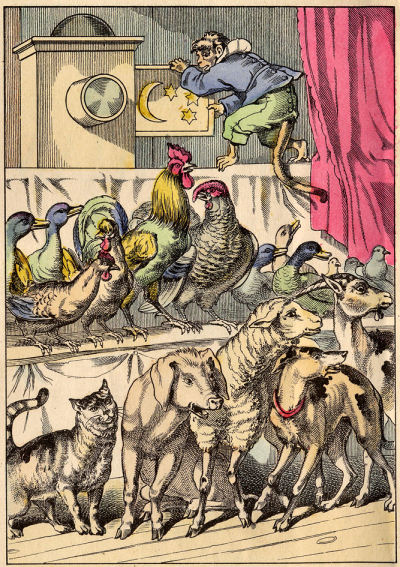
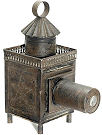 BOOK:
Les Fables de Jean-Pierre Claris de Florian.
Illustrees par A. Vimar. Henrie Laurens, Editeur. [n.d.,
c.1899] Avant-Propos de Andre Theuriet. 137 pages. Many b/w
illustrations, and eight in colour, mostly full-page. Size: 225 x 283
mm. Featuring: Le Singe et la Lanterne Magique (The Monkey with the
Magic Lantern.)
BOOK:
Les Fables de Jean-Pierre Claris de Florian.
Illustrees par A. Vimar. Henrie Laurens, Editeur. [n.d.,
c.1899] Avant-Propos de Andre Theuriet. 137 pages. Many b/w
illustrations, and eight in colour, mostly full-page. Size: 225 x 283
mm. Featuring: Le Singe et la Lanterne Magique (The Monkey with the
Magic Lantern.)